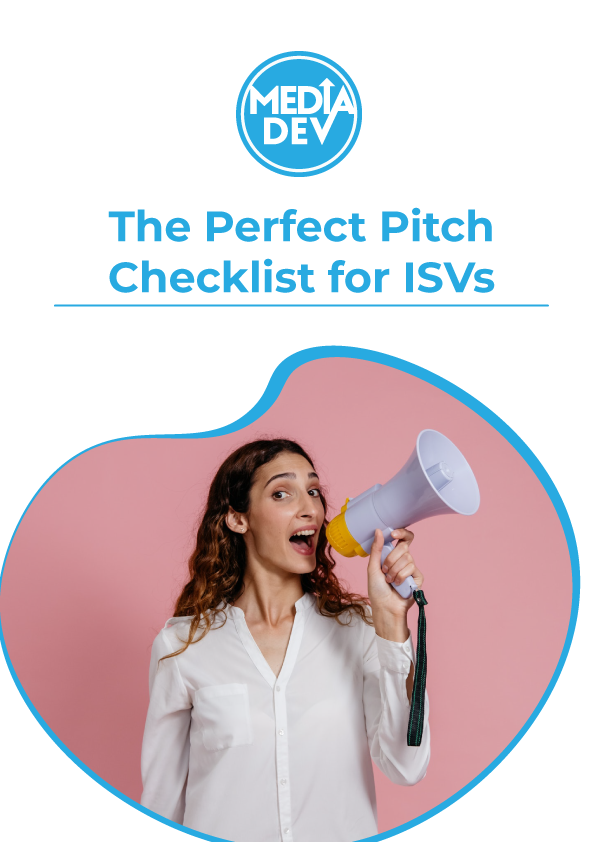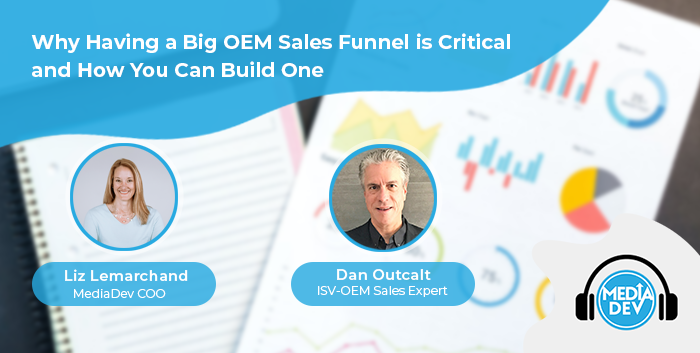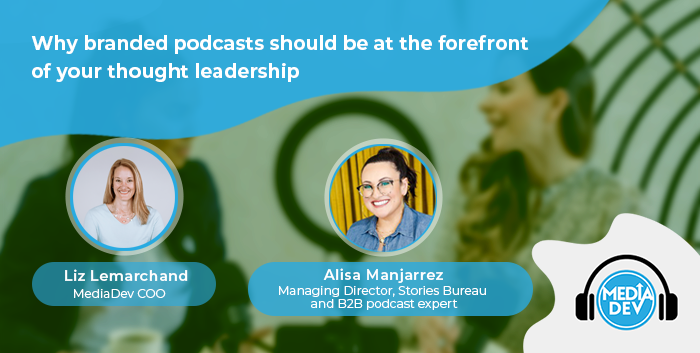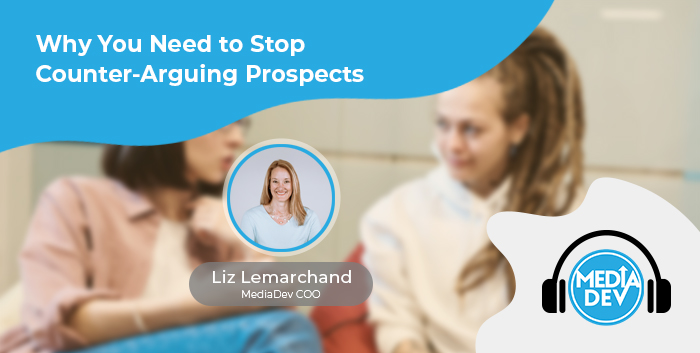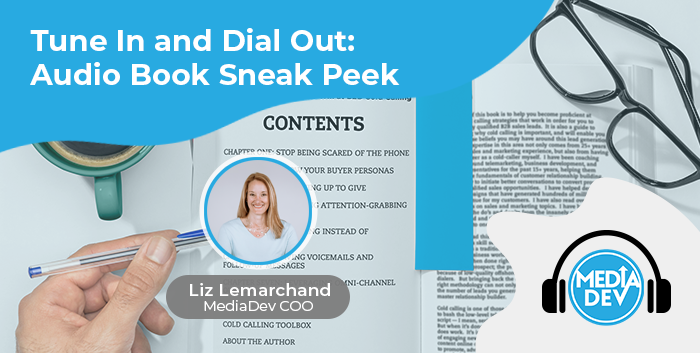In this episode, Liz talks about her book, Tune In and Dial Out: How to Win at B2B Cold Calling and shares some quick tools and strategies so that you can really implement all of the best practices that she outlined in the book and get really good at your cold calling outreach. If you’re already thriving at cold calling but are still looking to improve or you’re struggling and want to thrive at it, then this episode is for you!
Listen to the episode on Apple Podcast, Google Podcasts, Spotify, Breaker, Pocket casts, RadioPublic, or Anchor, or read the transcript below.
SHOW NOTES
How to get good at cold calling outreach [00:21]
Breaking the negative energy [01:46]
Putting yourself into state before you make the call [02:05]
Recommended exercises before making a call [2:59]
How do you change any negative self-talk into positive self-talk? [03:31]
How do you break the pattern of suspicion so that your caller does not end up pushing back? [04:34]
What are some high-quality questions that you can ask to get the ball rolling during your cold call? [06:02]
Why it’s important to think about your opening question and ensure you start off with a question? [07:36]
If you’ve enjoyed this episode, please subscribe via Apple Podcast | Google Podcasts | Spotify | Anchor to automatically get the next ones!
Thanks for Listening Today!
Share it with someone you believe will also benefit from listening to it. Use the share buttons below! They’ll thank you for it.
TRANSCRIPT
Liz Lemarchand: How is it that innovative software solutions have the ability to change the world yet they don’t sell themselves? How is it that I know my target market but I’m not able to generate enough sales opportunities? How do I even get started to create visibility for my brand when I’m not an expert in marketing? That is the question and this podcast will give you the answer. Welcome to SMplified: Software Marketing Made Simple!
Hey everyone, it’s Liz from MediaDev and I’m super excited to be here today to talk about my book, Tune in and dial out how to win at B2B Cold calling, and today I’m going to give some quick tools and strategies so that you can really implement all of the best practices that I outline in the book and get really good at your cold calling outreach.
So the first thing I think is important to address is that cold calling really has such a negative reputation around it. And it’s unfortunate because it is still an outreach tactic that can work very well if you know how to do it right, and I think most of the time, people just get all up in their heads about, you know, well, they’re never going to answer the phone, and why would anyone want to talk to me anyway? And you know, there’s this kind of negative self-talk that happens inside of the cold caller’s mind that really affects their energy when they make the call.
And then on the flip side, people receiving phone calls be like… I remember when I was a kid and I used to be super excited. You know, the phone would ring, and I’d run down the hallway and I’d answer the phone, you know, wondering who it was; hoping, obviously, that the call is for me… and that has really been replaced these days with a kind of general suspicion, you know, you look at your phone, you don’t know the number who’s calling and you think to yourself, ‘well, who’s this and what is this about?’ and that kind of negative energy going into the receiving mode, that suspicion, really does create this kind of overall, bad feeling about the cold call.
So how can you break that? If you’re a cold caller and you already know going into it that you need to reassure your prospects and put them at ease and get them into a place where they can trust that you’re not going to cram down some really low-level message, you know, trying to sell them something that doesn’t bring any value to them. You can do that, first of all, by putting yourself into state. So what does that mean, putting yourself into state? Well, when you come into any conversation, what you put in is what you get out.
So if you’re putting in the kind of negative energy or stress, anxiety, worry, fear, or any of those negative emotions that most people usually feel when they start picking up the phone and calling somebody they don’t know, that’s going to boomerang back to you in a negative response because you can absolutely feel the energy that somebody is bringing into a phone call.
And you know this because you’re affected by it every time somebody calls you with a kind of negative vibe, whether that be in the business environment, business context, or in your personal life.
So that’s the first thing at putting yourself into state. You literally have to first change your physiology; if you just move around the room a little bit, if you do some jumping jacks or jump on a trampoline or do some, you know, kind of power poses or breathing exercises. You could even watch a funny clip on YouTube. Just something to get you into a kind of more positive mood, a positive state. That will absolutely impact the energy that you bring into the call.
It’s super important to change all that negative self-talk and to turn that into positive self-talk. ‘What if my call were bringing real value to this prospect?’ ‘What if they’re really happy that I’m calling them and we can engage in a great conversation together and I can learn from this experience?’ ‘What if I’m not bothering the prospect when I call them?’
Those are some of the things that we can say to ourselves just so that we can dispel this negativity that’s coming into the call in the first place, which could just be unfounded. You don’t know what the other person is thinking.
We project our belief system onto other people, but in fact, we have no idea what’s going through their heads, so I think it’s really important to be able to do that. From the very onset of the phone call so that we don’t get ourselves all tripped up in this, you know, bad-feeling vibe.
So that’s the first thing – get into state. The next is: you have to be able to break the pattern.
And what I mean by that is that there are predictable patterns with predictable outcomes and the result that you get is directly affected by what you’re putting in, right? So if you are on the phone, and you start, you know, endlessly talking about the value proposition, sounding like you’re selling something, people are going to push back and they’re going to say no because nobody wants to buy anything. And you could be selling gold at half market value and people are still going to say no because of that exact reason.
The fact is, is that for the majority of B2B cold calls, you are not actually selling anything because nobody is going to buy a complex software solution over the phone.
You know, and I do say this on several other video posts that I’ve done in the past and other blog articles that I’ve written on our resource library, ‘if you were to call me up and ask me if I have a project to buy a car, I would tell you no. If you thought that I was going to purchase the car over the phone, you’re out of your mind. That’s never going to happen.
So the idea is to get me to the showrooms, test drive a car. You can do that by asking some probing, open-ended questions that get me to think and really to break that pattern of suspicion that I mentioned earlier.
So what are some high-quality questions that you can ask to get the ball rolling? Well, obviously it depends on the buyer persona that you’re talking to. It depends on their role within the company, and it depends on your solution. But you can always ask questions that go to the heart of a particular pain point. You can even, in some instances, just really say something off the wall, because having a reaction like ‘What!?’ is a good thing. I’d rather have that than to have the person just hang up because they think that the call is of no value to them.
So, for example, you know, we’re running an event traffic campaign right now and I think a great opening question is, you know, what are you doing on Thursday the 22nd? People would be like ‘What do you mean?’ Like ‘Why?’ ‘Why do you want to know that?’
That’s a good thing because then you start to have this back and forth exchange because they are saying, ‘why are you asking me that? And then you can explain something about your event. You can see if the event topic is of interest to them and see if they’re interested to register.
You know it’s something a bit out of the ordinary instead of calling up and saying, ‘hey, we are having this event and it is all about this and we’d love for you to come…’ and then you’re not stopping to talk to even let the prospect breathe and their brain has basically gone into shutdown mode because they’re not really listening to you anymore. They are just waiting for you to take a break so that they can say no thanks and then get on with their day.
So, it is really important to think about what is the opening question that you can ask. Starting off with the question is a great opener, instead of saying a long-winded explanation about, you know, your elevator pitch or your value prop.
Those are just some really quick tips. Obviously, in the book, I’ve outlined a ton more things, but the last thing I will say today is that getting over your fear of the phone and turning that into excitement really is critical. It’s key because, again, that fear, that negativity, that energy that you bring, is only going to inhibit you from being able to see the bigger picture, and that’s to provide value to your prospect.
So that’s it for today. Thank you so much for joining me. Stay tuned for another episode. And of course, you can go and check out the book by typing: Tune In and Dial Out on Amazon.com.
And for more wonderful resources that can help you in your daily outreach, check out our resource library at mediadev.com.
Thanks again everyone. Take care. Bye.
You just listened to SMplified brought to you by MediaDev. If you have software marketing questions or need help marketing your software solution, reach out to us at contact@mediadev.com and check out other amazing assets for you on our resource library at mediadev.com.


